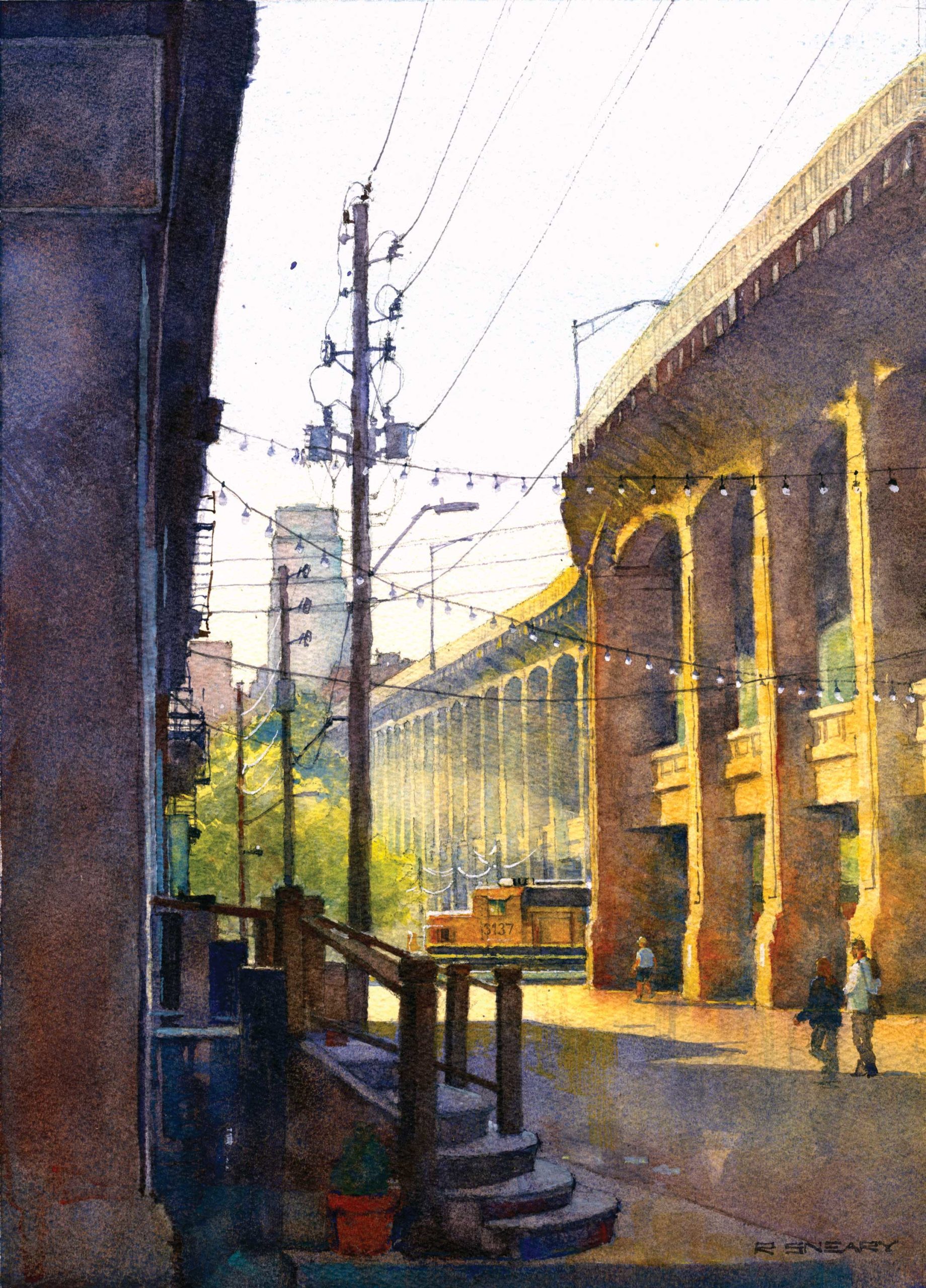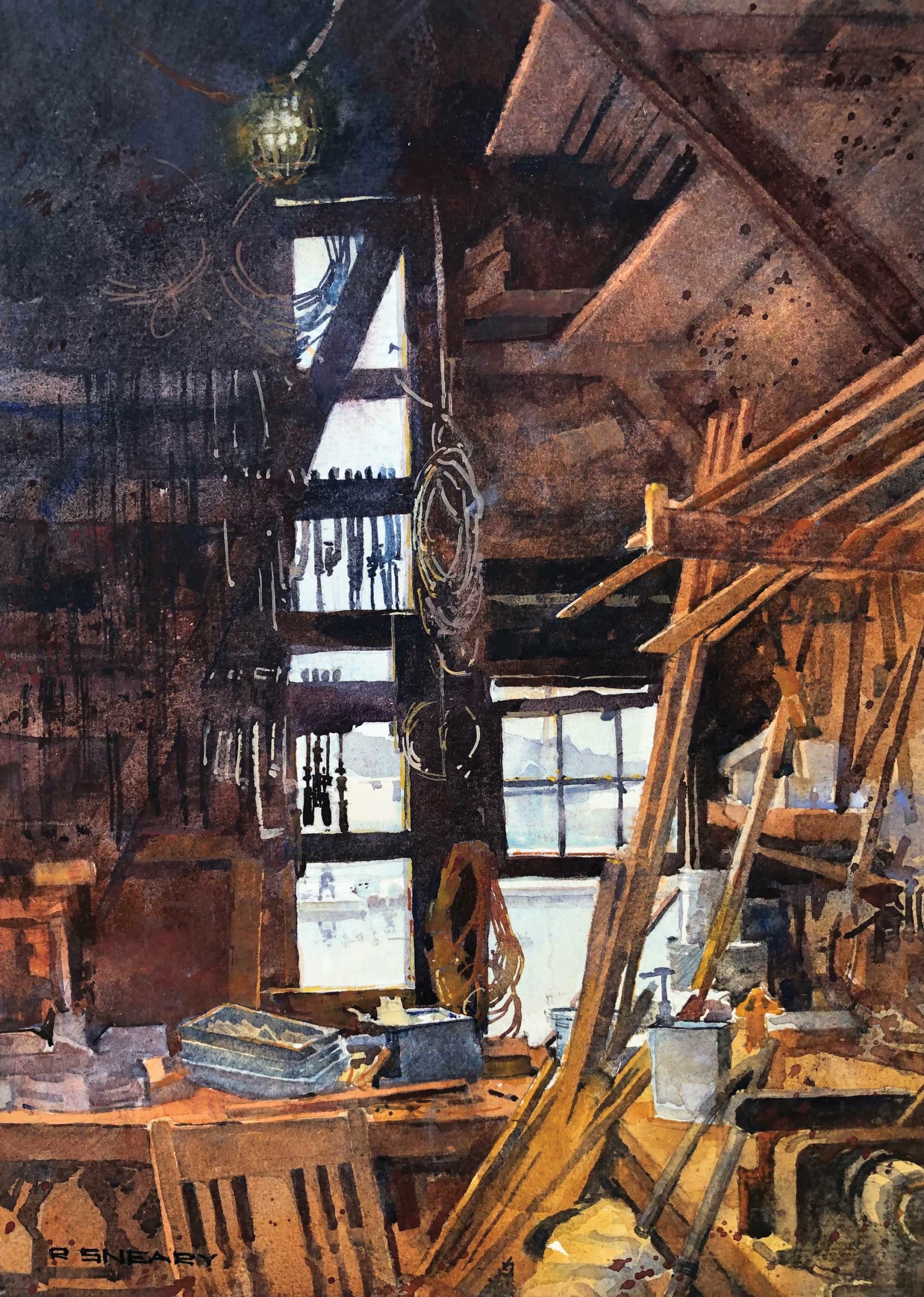
Richard Sneary works on rough paper and sketches with a water brush and water-soluble graphite. He usually opts for a quarter sheet of watercolor paper, resulting in an image about 10 x 14 inches.
Sneary has three color palettes and chooses the one that best fits the logistics and subject matter of the day. One palette is smaller, designed for more nimble outings. Some of the more interesting paints on his palette are four greens, Azo yellow, lavender, cobalt teal, and a few neutrals. He prefers Chinese calligraphy brushes but also uses fan brushes, mops, and extended-point brushes from Rosemary & Co, which hold a lot of paint and water yet make a fine line.

The small spatters of paint that add texture to a scene are added with a paintbrush. “Make your spatters before the end so you can paint over them and soften them,” Sneary recommends. “Flick the paintbrush loaded with paint. Many people use a toothbrush, but a toothbrush makes the spatters too even for me. To make sure your brush isn’t throwing big blobs, flick the brush off center from the painting so the droplets spatter but don’t splash.”
Sneary is a well-regarded architectural illustrator as well as a fine art painter, so it’s little wonder his drawing skills are exacting. Although his focus has been on fine art painting since 2011, he also boasts the title of president emeritus of the American Society of Architectural Illustrators. He studied architecture at the University of Kansas, in Lawrence, where he met an important mentor — a teacher named James Sterritt, who taught painting and drawing.

“Everyone has had at least one of those great teachers who’s made a real difference, and he was mine. He made pickles and beer, and played football with us,” Sneary says, explaining the outsized presence Sterritt had among his friends and students.
Sneary’s architectural illustration background ensures good draftsmanship, but it has other effects as well. “I learned perspective drawing from architecture, of course,” he says, “but drawing is a bit different for oil painters because oil painters draw with the brush to lay down shapes. I lay out the drawing with a pencil, which can take up to 30 minutes.”

Watch Richard Russell Sneary play with light and shadow, shape and edges, and see how he creates drama by expertly manipulating his paint in Watercolor Mastery – Light & Shadow.







